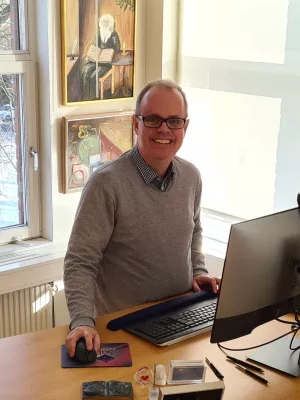
Håkan Carlsson
Överbibliotekarie

General User Surveys and Other Methods for Quality Assessment – User Knowledge and Evidence-Based Library Development
Författare
Summary, in English
Avdelning/ar
- Stab
Publiceringsår
2019-06-16
Språk
Engelska
Länkar
Dokumenttyp
Konferensbidrag: abstract
Ämne
- Information Studies
Nyckelord
- Quality assessment
- Academic libraries
- user surveys
- user knowledge
- ethnographic methods
- library development
Conference name
10th International Evidence Based Library and Information Practice Conference
Conference date
2019-06-16 - 2019-06-19
Conference place
Glasgow, United Kingdom
Status
Published
Projekt
- Survey the Surveyors 2017

